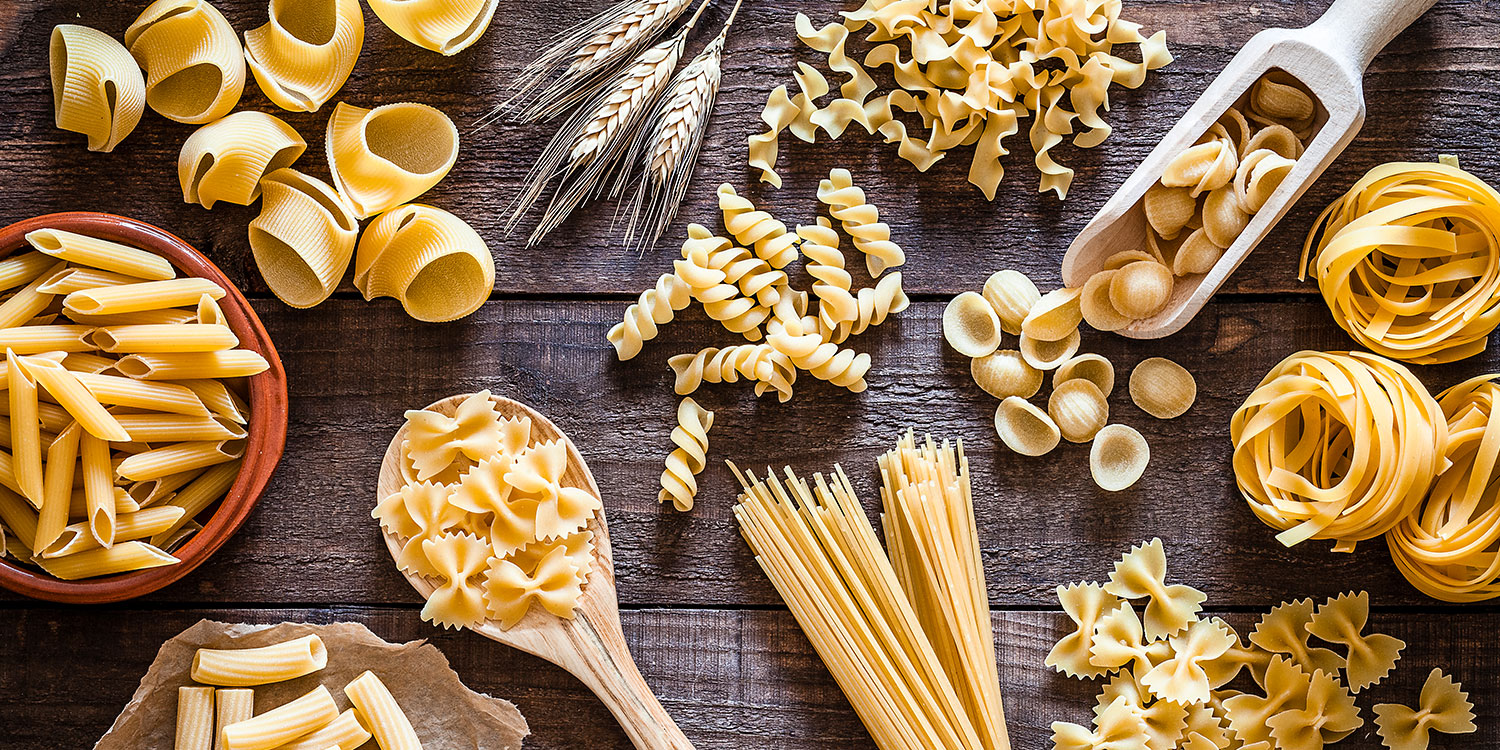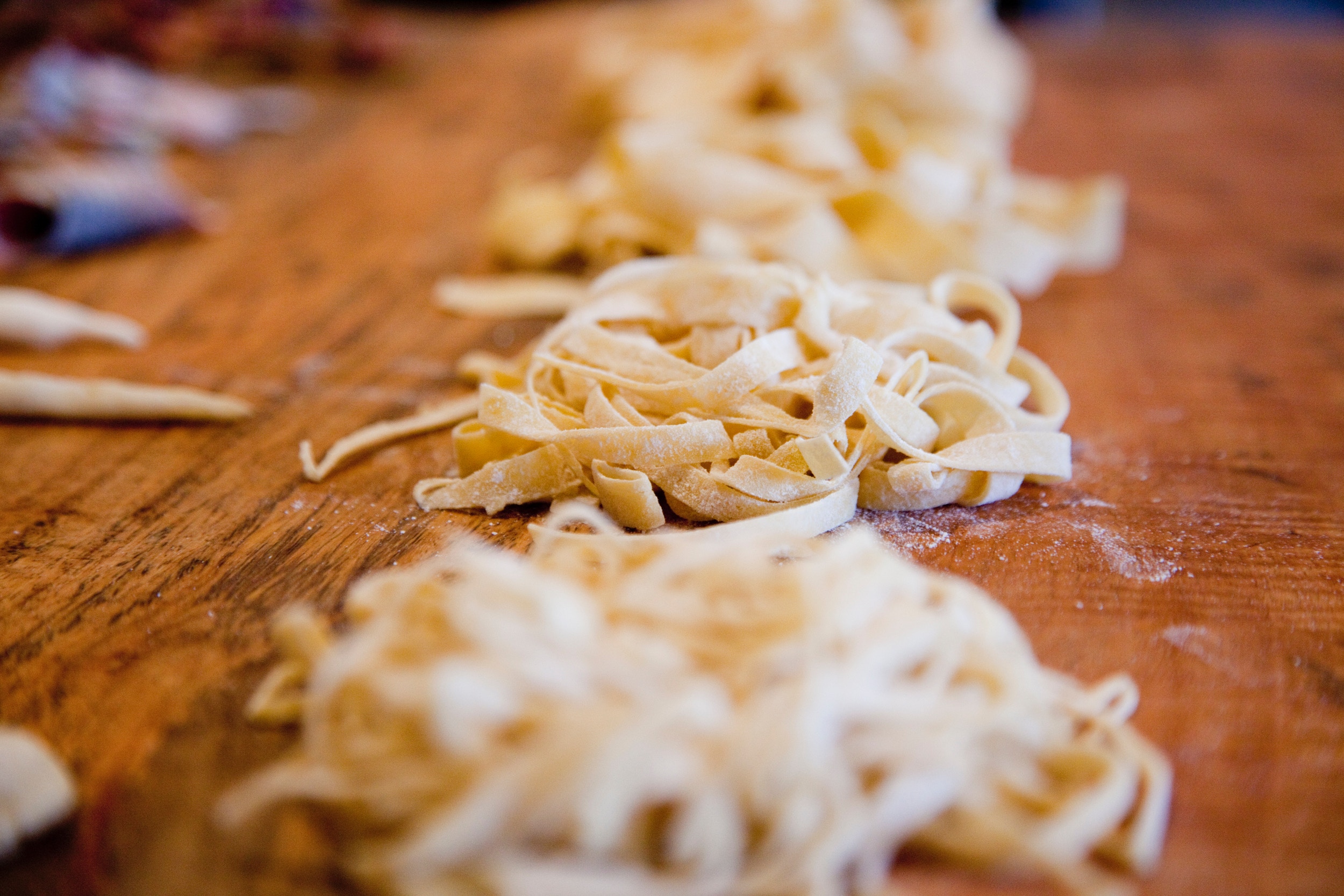Related Articles

Types of Pasta and What They’re Used In
When deciding on a pasta dish, it’s important to think about the specifics. What type of sauce are you imagining, and how does the pasta’s cut, shape and thickness determine the taste and texture of what you’d like to create? Consider whether you’d like to keep your sauce light and fresh, creamy and rich or hearty and meaty. You can also think about whether you want your pasta as a main dish or a side dish and which vegetables you’d like to incorporate.
With over 200 unique types of pasta noodles, there are so many choices when it comes to cooking pasta! That’s why we have put together a helpful guide for all of you chefs on the 26 most common pasta shapes and how to cook them. Read below to learn the best sauces for each pasta, and how long to cook each. Buon appetito!
Dry Pasta vs. Fresh Pasta

Dry Pasta
Dry pasta is made with semolina flour, water and salt and can be stored at room temperature for at least a few years. Once the dough has been shaped, it is put through a drying process which extracts the moisture. Many dry pastas have the consistency you would find at an Italian trattoria, and taste quite similar. Dry pasta has a firm texture, perfect for Grandma’s casserole, soups and dishes with hearty sauce. One pound of dry pasta serves about four people.
Fresh Pasta
Fresh pasta is usually made from white flour, with eggs as a substitute for additional water to create extra moisture. Fresh pasta takes less than half the time of dry pasta to cook. Because of its soft, fragile texture, it is best with light sauces like tomato cream, olive oil or butter. One pound of fresh pasta serves about three people.
Pasta Cooking Terms
Before we get started with types of pasta, it’s important to understand pasta terms. Pasta can be made with a wide variety of flours and is usually cooked al dente, firm or soft. Read below for some tips and tricks on flour types and pasta shapes.
- Al dente: Literally meaning “to the tooth,” al dente represents pasta that is cooked to be firm to the bite.
- Durum: A hard wheat that’s high in protein and gluten. Because of its low moisture content, it can usually stay on your shelf for a few years.
- Red Lentil/Chickpea Flour: Pasta made from these vegetables has more protein and fiber than regular pasta.
- Tri-color pasta: A mixture of white, green and red noodles usually made with a portion of vegetable flour. Can be great for kids’ meals and pasta salads.
- Semolina: Coarse flour used to make dry pasta, made from high-protein durum wheat.
- Ini & Oni: These are common suffixes that indicate the size of the pasta. When you see -ini, think smaller, and -oni think larger. (AKA rigatoni!)
- Rigate: “With ridges” is a term to describe types of pasta noodles with texture, perfect for clinging to sauces, meats and vegetables.
Types of Pasta
When it comes to pasta, there are hundreds of different shapes to choose from. Whether you want to prepare a yummy pesto cream sauce, hearty ragu or light olive oil recipe, there’s a pasta for each. While all pasta shapes taste delicious, choosing the right shape for each is important to the style and overall essence of the dish.
Below you’ll find 26 common pasta shapes and how long to cook each. The cooking time is an approximate guideline, so be sure to read the label on your box for reference. For fresh pasta, we suggest cooking anywhere from one to five minutes depending on the thickness of the pasta.
Long Form Pasta
Long form pasta is anything that you can twist around your fork. It’s usually straight with varying widths. The thinnest long form pasta is known as angel hair, with the plumpest being bucatini. These pastas can come flat like the ribbon pastas below, or they can be round.
They can also be made hollow, such as bucatini. Long form pasta pairs well with light seafood sauces, creamy or oil-based sauces. Ribbon pasta, a subcategory of long form, pairs well with rich, meaty sauces because of its long width.
Short Form Pasta
Short form pasta is any pasta that is smaller in size and can usually be picked up with a fork (no twirl necessary). Short form pasta takes on three subcategories: tubular pasta, shaped pasta and stuffed pasta. A common tubular pasta is rigatoni, a wide noodle perfect for a baked cheese dish. Shaped pasta can include farfalle and fusilli, and stuffed pasta (like ravioli) is any pasta that includes something in the middle. Dumpling pasta and gnocchi also fit into the stuffed category.
Tubular pasta goes well with hearty vegetable sauces or baked cheese dishes, while shaped pasta is great with lighter, smoother sauces that cling to the twists of the pasta noodle. Stuffed pasta works with a light butter or cream sauce.

Pasta is a fast and easy meal the whole family can enjoy. Follow our suggestions for delicious pasta sauce pairings and serve with a personalized dish or bowl. All pasta shapes are created equal, so choose your favorite and transport your guests to a night in Italy!
Sources:
Real Simple | WebstaurauntStore | Pasta Fits | The Nibble | Recipe Tips | Real Simple | BBC Good Food |


















